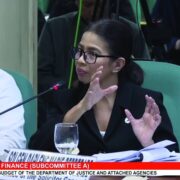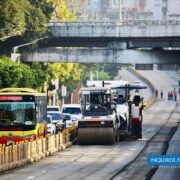State and statelessness in South Asia

Kathmandu—After assuming office as United States President, Donald Trump started deporting students and migrants. They include Indians illegally working in the US, and 12 Bhutanese refugees who were part of a United Nations-led third-country settlement to resolve the long-pending Bhutanese refugee issue.
Bhutan had disowned these refugees and deported them to Nepal where they were arrested for illegally entering the country. The families of some of these deportees are still living in camps in eastern Nepal, where they were sent the same way in 1990.
These refugees were rendered stateless by Bhutan when it decided to expel Lhotshampas (Bhutanese of Nepali origin), alleging that they are illegal migrants. Nepal and Bhutan initiated bilateral talks on a four-point agreement that included joint verification by the two countries to identify and repatriate more than 100,000 refugees living in the eastern Nepal camp. But Bhutan refused to take the refugees back, claiming they are not its citizens. The four-point agreement was silent on what happens to those who cannot prove themselves as Bhutanese.
In 2007, some countries—the US, Australia, New Zealand, the Netherlands, Norway, and the United Kingdom—joined hands to facilitate the settlement of these refugees in their own countries. It is worth noting that more than 7,000 refugees who did not opt for third-country settlement are still languishing in the camps as international aid slowly dries up.
Statelessness is not new in South Asia. Bhutan has expelled Lhotshampas as it feared erosion of its unique identity because of the growing population of these Nepali migrants.
Similarly, in Myanmar, Rohingyas are not considered citizens but are illegal migrants as per the 1982 Burmese Citizenship Act. Rendered stateless, they were expelled from the state through violence and are now staying in refugee camps in Bangladesh’s Cox’s Bazar. The Chinese facilitated an agreement between Bangladesh and Myanmar for repatriation, but it has not prospered as the Rohingyas do not want to return without a legal guarantee. Moreover, in the unfolding civil war, Rohingyas are recruited both by the Arakan Army and the Tatmadaw, as the Myanmar Army is popularly known.
There is a long-standing issue of “stranded Pakistanis” between Pakistan and Bangladesh. The Biharis (Muslims originally from Bihar) who had migrated to then East Pakistan opted for Pakistan after Bangladesh was formed in 1971. Most of them became unwanted. While Pakistan took some of these people back in 1998 with the Saudi organization—Rabita Al-Alam Al-Islami which funded a resettlement plan in Pakistan’s Punjab province—many of them were left behind in Bangladesh for political reasons.
There was fear that the repatriation of these Bihari refugees from Bangladesh would strengthen the Mohajir Qaumi Movement political constituency. Bangladesh had refused to accept them as citizens due to their collaboration with the Pakistan Army to repress the Bengalis during the liberation war. However, the Bangladesh Supreme Court ruled that those born in Bangladesh after 1971 should get Bangladeshi citizenship. Yet many still await repatriation and live miserable lives in congested camps.
India and Sri Lanka cooperated to end the statelessness of Tamil plantation workers after Sri Lanka implemented the Citizenship Act. Both the Shastri-Sirimavo Pact and the Indira-Sirimavo Pact resulted in the repatriation of Tamil plantation workers at a ratio of 7:4. Those who were born in Sri Lanka after the initiation of the repatriation process were absorbed as citizens, but discrimination against the Tamil plantation workers remains.
Pakistan’s has repatriated back some 80,000 Afghans against their will, as they are considered a security risk. Pakistan has also accused them of being involved in criminal activities.
In all these cases of expulsion, the fear of erosion of identities by the majority group is visible. This has resulted in a humanitarian crisis and bilateral tensions between the refugee-sending countries and the receiving countries. Politicians view them as either liabilities or assets to their electoral prospects. Many refugees do not even have access to livelihood or education in India, whose approach towards Bhutanese and Rohingya refugees is distinct compared to other refugees.
Most states look at refugees as “unwanted” people and a drain on limited resources. They are keen on repatriating refugees who have become an economic burden and put pressure on the local labor market. Yet, repatriation has remained elusive as the sending countries do not want them. Statelessness is a new reality for millions in this region. The Kathmandu Post/Asia News Network
—————-
Smruti S Pattanaik is a research fellow at the Manohar Parrikar Institute for Defence Studies and Analyses, New Delhi, India.
—————-
The Philippine Daily Inquirer is a member of the Asia News Network, an alliance of 22 media titles in the region.

















Online overseas voting 2.0